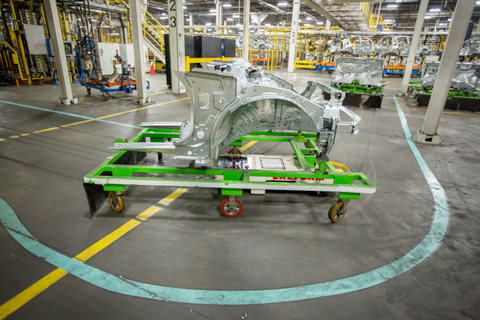An Interview with Rob Threlkeld–GM’s Global Manager of Renewable Energy
While General Motors is greening its vehicle lineup with cars such as the all-electric Bolt EV and making other improvements throughout its fleet, the company is also working to green the manufacturing side of its operations by using renewable energy to run its vehicle plants.
As part of a company vision presented by CEO Mary Barra in the lengthy 2017 Sustainability Report, GM sees a world with zero crashes, zero emissions, and zero congestion.
I spoke with Rob Threlkeld, GM’s Global Manager of Renewable Energy, at the VERGE Conference and Expo in Oakland, California. Threlkeld, who has worked for GM since 2000, currently leads the company’s commitment to meet its electricity needs with 100 percent renewable energy across its global operations by 2050. He is focused on making the company vision’s second zero a reality.
The Power Negotiator
As part of his job, Threlkeld negotiates long-term power purchase agreements for GM facilities around the world, and shares what he learns internally and externally. A trained civil engineer, he is a board member of the American Wind Energy Association and is involved with the Solar Energy Industries Association, two national organizations that promote these growing industries.

In his current position, Threlkeld has negotiated the purchase of renewable energy offsite and creation of it onsite. Working with the Michigan Green Tariff, he has leveraged GM’s scale, working with other companies to make building wind farms a viable project.
An internet definition: “A green supply tariff means that some or all of the electricity you buy is ‘matched’ by purchases of renewable energy that your energy supplier makes on your behalf. These could come from a variety of renewable energy sources such as wind farms and hydroelectric power stations.”
Per Threlkeld, green tariffs were only in a couple of states two years ago, but are implemented or in process now in 22 states.
Four Pillars
Here are Threlkeld’s four pillars of the path to 100 percent renewable energy by 2050:
- Reduce consumption
- Source renewables on- and off-site
- Set up battery storage, including electric-vehicle-to-grid
- Scale up, using renewable green tariffs, to build solar grids and wind farms
GM works with the Renewable Energy Buyers Alliance (REBA) to build renewable energy projects.

“REBA is helping to accelerate the process through high tech,” said Threlkeld. “It’s grown a lot in the last few years, moving from 13 companies to more than 160 today, including BMW and Tata in the automotive sector.”
REBA lets companies of various sizes participate in purchasing green energy. Threlkeld provided an example. “You can aggregate a deal where three companies collaborate to build 200 megawatts (MW) of wind-generated electricity. One company buys 100 MW, another 80, and a smaller company picks up the remaining 20.”
Threlkeld described how these developments help more than just GM. “Another benefit of building wind farms is that it gives income to the farmers who own the land and creates green industry jobs.”
In Michigan, there is a wind farm that produces 44 MW of energy, and GM is using 30 of that. In Northwest Ohio, a 105-MW plant is used exclusively by GM.
“The speed of technology is helping the transformation to renewables, so we can move the envelope,” said Threlkeld.
Investments in the Future
The company is also investing in STEM (Science, Technology, Engineering and Mathematics) in schools, to train the technology leaders GM will hire in the future.
I asked Threlkeld whether the Orion Assembly Plant in Orion Township, Michigan, where the Chevrolet Bolt EV is built, uses renewable energy.

“The plant self-generates up to 8 MW of electricity on site from methane gas generated from landfills, supplying 40 percent of the energy used there,” he answered. “Fifteen percent of the energy in Michigan comes from renewable energy today.” By the end of 2018, renewable energy will power 20 percent of GM’s global electricity use.
Speaking of landfills, GM now has 142 manufacturing sites that no longer send anything to landfills (landfill free).
Threlkeld is dedicated to making GM a clean energy company. He says his concern started early. “I learned about acid rain in the second grade,” he said. “Miss Taber told us that it was hurting the maple trees, and I loved maple syrup.”
His 19-year career at GM has been focused on making progress toward renewable goals. GM’s 100 percent renewable energy goal is set for 2050, which seems like a long time away. Threlkeld believes that, working with scale, they may be able to hit it earlier.
“If we can get many players in one room, we have the ability to make a difference—and that’s what we’re going to continue to do.”

4 thoughts on “VERGE: General Motors Ramps Up Renewable Energy in its Plants”